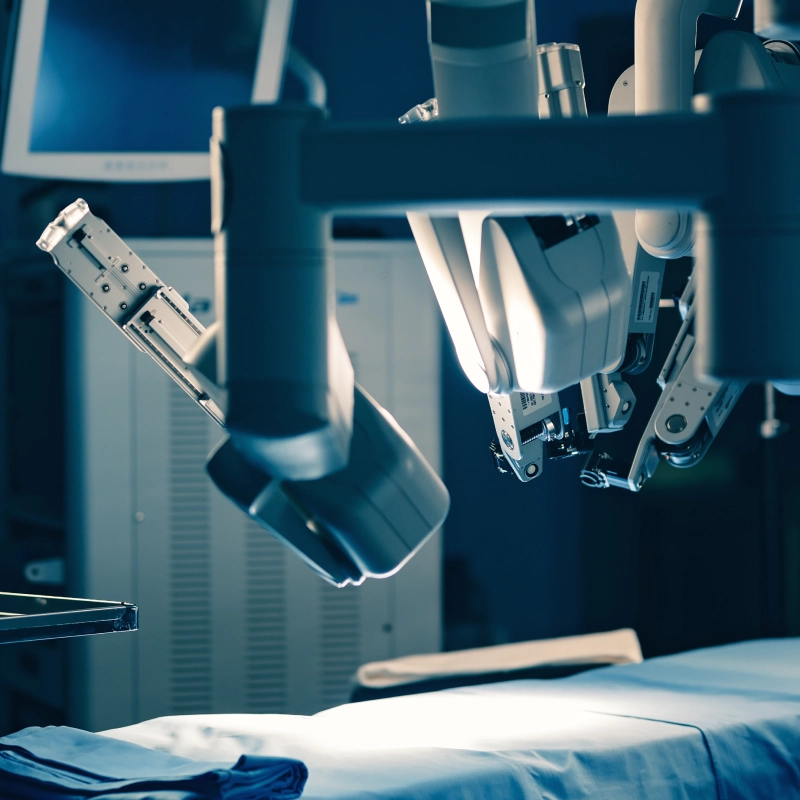
The field of urology has seen significant advancements in recent years, particularly with the advent of robotic-assisted surgeries. These technological innovations have dramatically improved the treatment of urological cancers, offering patients less invasive options, faster recovery times, and better outcomes.
Understanding Urological Cancers
Urological cancers encompass a range of malignancies affecting the urinary system and the male reproductive organs. The most common types include:
- Prostate Cancer: The most prevalent cancer among men, affecting the prostate gland.
- Bladder Cancer: Affects the lining of the bladder.
- Kidney Cancer: Originates in the kidneys, often detected through imaging tests for other conditions.
- Testicular Cancer: Affects the testicles, most common in younger men.
- Early detection and effective treatment are crucial for these cancers, and robotics has become a powerful tool in the surgical management of these diseases.
The Rise of Robotic-Assisted Surgery
Robotic-assisted surgery, particularly with the da Vinci Surgical System, has revolutionized the approach to urological cancers. This technology allows surgeons to perform complex procedures with greater precision, flexibility, and control than traditional techniques.
Here are some key benefits of robotic-assisted surgery:
- Minimally Invasive: Robotic surgery involves small incisions, reducing trauma to the body.
- Enhanced Precision: The robotic system provides high-definition, 3D visualization, and instruments that mimic the movement of the human hand with greater dexterity and precision.
- Reduced Blood Loss: Smaller incisions and precise movements minimize blood loss during surgery.
- Shorter Hospital Stays: Patients typically experience quicker recovery times and shorter hospital stays.
- Less Pain and Scarring: Smaller incisions lead to less postoperative pain and minimal scarring.
- Faster Recovery: Patients often return to their normal activities more quickly compared to traditional surgery.
Robotic-Assisted Procedures in Urological Cancers
Several urological cancer surgeries can be performed using robotic assistance, including:
- Robotic Prostatectomy: The removal of the prostate gland in prostate cancer patients. Robotic assistance allows for nerve-sparing techniques that can help preserve urinary and sexual function.
- Robotic Partial Nephrectomy: The removal of a kidney tumor while preserving healthy kidney tissue. This procedure is particularly beneficial for patients with localized kidney cancer. Robotics gives that extra edge in performing this highly precision surgery with minimal blood loss and faster recovery
- Robotic Radical Cystectomy: The removal of the bladder in bladder cancer patients. Robotic surgery offers precise control, which is crucial for this complex procedure.
- Robotic Pyeloplasty: The reconstruction of the renal pelvis to drain and decompress the kidney, often used to treat kidney cancer patients with obstructions.
- Robotic ureteric reimplantation
- Robotic retroperitoneal lymphnode dissections
Patient Outcomes and Benefits
The adoption of robotic-assisted surgery in urology has led to significant improvements in patient outcomes. Studies have shown that patients undergoing robotic-assisted surgeries for urological cancers experience:
- Higher Cancer Control Rates: Enhanced precision leads to better removal of cancerous tissues, reducing the risk of recurrence.
- Improved Functional Outcomes: Nerve-sparing techniques help preserve urinary and sexual functions, particularly in prostate cancer surgeries.
- Faster Recovery Times: Patients benefit from shorter hospital stays and quicker returns to daily activities.
- Lower Complication Rates: The minimally invasive nature of robotic surgery reduces the risk of complications, such as infections and excessive bleeding.
The Future of Robotics in Urological Cancer Treatment
The field of robotic surgery continues to evolve, with ongoing advancements in technology and techniques. Future developments may include:
- Improved Imaging and Navigation: Enhanced imaging technologies and real-time navigation systems will further increase the precision of robotic surgeries.
- Artificial Intelligence (AI): AI integration could provide surgeons with predictive analytics, improving decision-making during surgery.
- Tele-surgery: Advancements in telemedicine may allow expert surgeons to perform robotic-assisted surgeries remotely, increasing access to high-quality care.
Conclusion
Robotics has revolutionized the treatment of urological cancers, providing patients with a minimally invasive option that offers numerous advantages. With ongoing technological advancements, robotic-assisted surgeries are becoming increasingly precise, efficient, and accessible. If you are diagnosed with urological cancer, consider discussing robotic-assisted surgery with your healthcare provider to learn how this cutting-edge approach can improve treatment and recovery outcomes.

